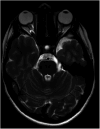A systematic review of surgical and interventional radiology procedures for pediatric idiopathic intracranial hypertension
- PMID: 39539766
- PMCID: PMC11557315
- DOI: 10.3389/fped.2024.1466688
A systematic review of surgical and interventional radiology procedures for pediatric idiopathic intracranial hypertension
Abstract
Background: Idiopathic intracranial hypertension (IIH) is defined as elevated intracranial pressure and consequent symptoms (mainly headache and visual deterioration) occurring in the absence of secondary causes. Surgical and interventional radiology procedures should be considered for refractory IIH and mainly include cerebrospinal fluid (CSF) diversion techniques, optic nerve sheath fenestration (ONSF), and venous sinus stenting (VSS). Our study aims to review the current literature on the application of these techniques in clinical practice.
Methods: A systematic literature review on the surgical and interventional radiology treatment of IIH was conducted, focusing on ONSF, VSS, and CSF diversion techniques. According to PRISMA guidelines, all reports published in PubMed in the last 30 years (1993-2023) were considered, and among 722 papers, 48 were included in the present study, resulting in a total study population of 454 children or adolescents (11 months-17 years old).
Results: Among 454 patients, 193 underwent an invasive approach, divided into CSF diversion (115/193), ONSF (65/193), VSS (11/193), cranial subtemporal decompression (8/193), and internal cranial expansion (9/193). Sixteen of the 193 patients (8%) required reintervention due to relapsing symptoms or surgical complications, particularly those who underwent CSF diversion. Furthermore, 9/115 required shunt revision due to shunt obstruction or malfunction. We extracted data on the outcome of each procedure: of the 193 patients, 71 experienced a positive outcome with symptom resolution or improvement, while 27 demonstrated a negative outcome.
Discussion and conclusions: Severe and refractory cases of IIH are eligible for invasive treatments. CSF diversion is the most frequently used technique, despite its high failure risk and need for reintervention. ONSF has shown good results in terms of outcome and safety, particularly in children with visual symptoms. VSS is the most recent approach, indicated in children with stenosis of the venous sinus. In our study population, VSS demonstrated good results in terms of symptom resolution and need for reintervention, but its use remains limited to a few centers.
Systematic review registration: https://www.crd.york.ac.uk/, PROSPERO (CRD42024504244).
Keywords: CSF shunting; ONSF; VSS; children and adolescents; idiopathic intracranial hypertension; review.
© 2024 Friso, Giacobbo, Toscano, Baldo, Guariento, Lacarra, Pin, Ancona, Sartori, Causin and Toldo.
Conflict of interest statement
The authors declared that they were an editorial board member of Frontiers, at the time of submission. This had no impact on the peer review process and the final decision. The authors declare that the research was conducted in the absence of any commercial or financial relationships that could be construed as a potential conflict of interest.
Figures




References
-
- Matthews YY, Dean F, Lim MJ, Mclachlan K, Rigby AS, Solanki GA, et al. Pseudotumor cerebri syndrome in childhood: incidence, clinical profile and risk factors in a national prospective population-based cohort study. Arch Dis Child. (2017) 102(8):715–21. 10.1136/archdischild-2016-312238 - DOI - PubMed
Publication types
LinkOut - more resources
Full Text Sources

